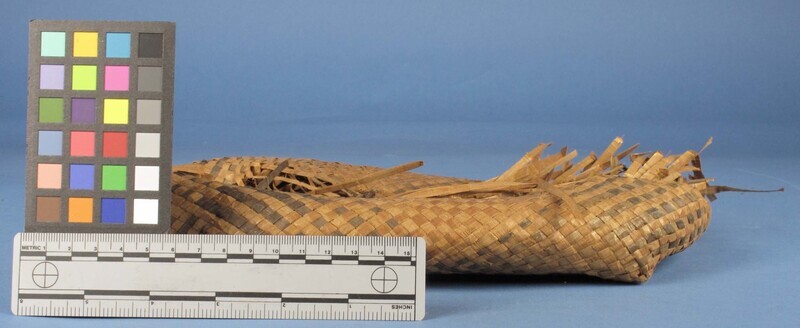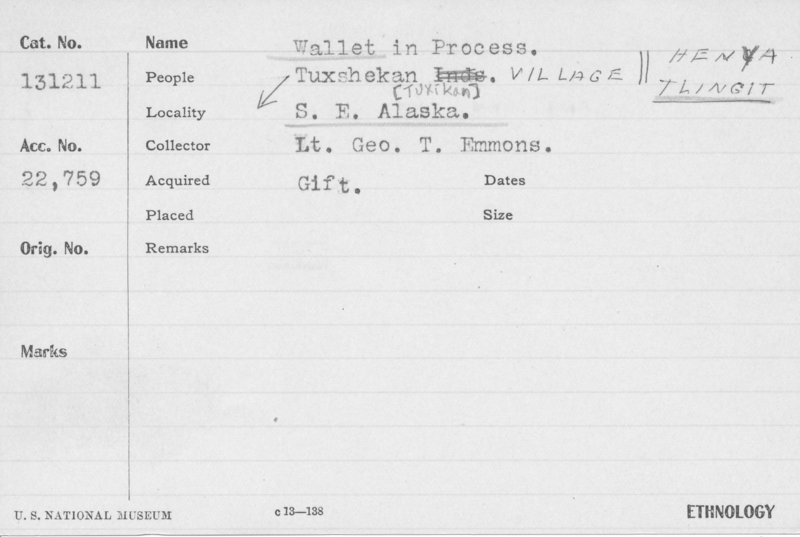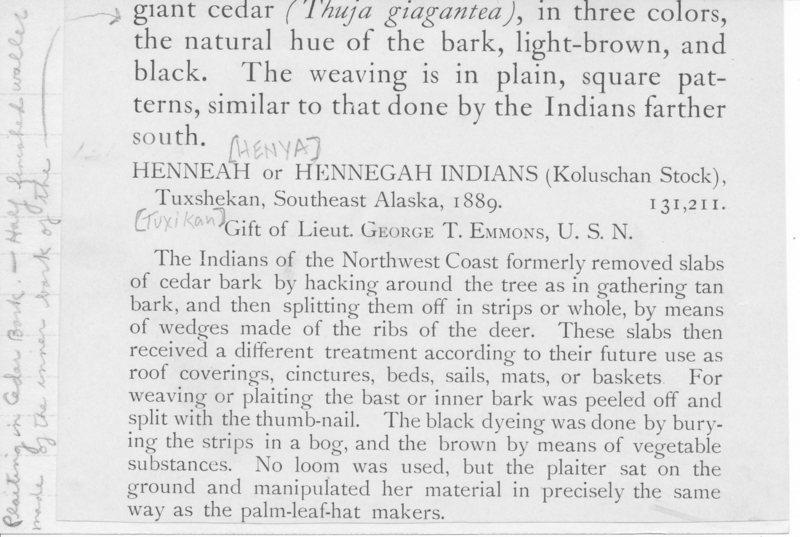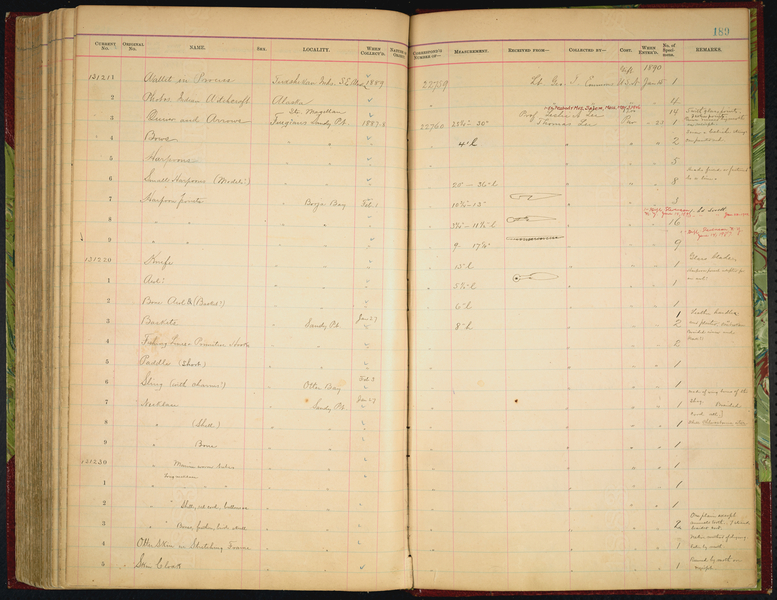Wallet In Process Item Number: E131211-0 from the National Museum of Natural History










Notes
From late 19th or early 20th century exhibit label with card: "Plaiting in Cedar Bark. - Half finished wallet made of the inner bark of the giant cedar (Thuja giagantea) in three colors, the natural hue of the bark, light-brown, and black. The weaving is in plain, square patterns, similar to that done by the Indians farther south. Henneah or Hennegah (Henya) Indians (Koluschan Stock), Tuxshekan (Tuxikan). Southeast Alaska, 1889. Gift of Lieut. George T. Emmons, U.S.N. The Indians of the Northwest Coast formerly removed slabs of cedar bark by hacking around the tree as in gathering tan bark, and then splitting them off in strips or whole, by means of wedges made of the ribs of the deer. These slabs then received a different treatment according to their future use as roof coverings, cinctures, beds, sails, mats, or baskets. For weaving or plaiting the bast or inner bark was peeled off and split with the thumb-nail. The black dyeing was done by burying the strips in a bog, and the brown by means of vegetable substances. No loom was used, but the plaiter sat on the ground and manipulated her material in precisely the same way as the palm-leaf-hat makers."
Item History
- Made in Tuxekan, Prince of Wales Island, Alaska, USA
- Collected by Lt. George T. Emmons in Tuxekan, Prince of Wales Island, Alaska, USA during 1889
- Received from U. S. Department of the Navy on January 9, 1890
What
- Name
- Wallet In Process
- Identification Number
- E131211-0
- Type of Item
- basket
Who
- Culture
- Tlingit and Henya
- Field Collector
- Lt. George T. Emmons
- Received from
- U. S. Department of the Navy
Where
- Holding Institution
- National Museum of Natural History
- Made in
- Tuxekan, Prince of Wales Island, Alaska, USA
- Collected in
- Tuxekan, Prince of Wales Island, Alaska, USA
When
- Collection Date
- during 1889
- Acquisition Date
- on January 9, 1890
Other
- Accession Number
- 022759